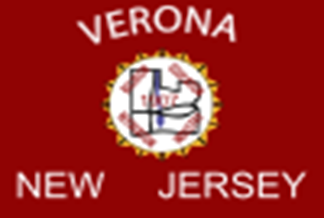History of Verona, NJ

Verona and several neighboring towns were all originally one town known as the Horseneck Tract. In 1702, a group of settlers left Newark and purchased a large tract of land northwest of their home city for the equivalent of a few hundred dollars from the Lenni-Lenape Native Americans. This piece of land extended west and north to the Passaic River, south to the town center of what would become Livingston, and east to the First Watchung Mountain, and was called Horseneck by the natives because it resembled the neck and head of a horse.
What was then known as Horseneck contained most of the present day northern Essex County towns: Verona, along with Caldwell, West Caldwell, Cedar Grove, Essex Fells, Fairfield, North Caldwell, and Roseland are all located entirely in Horseneck, and parts of what are today Livingston, Montclair, and West Orange also were contained in the Horseneck tract. After the Revolutionary War, Horseneck changed its name to “Caldwell Township” in honor of a local war hero and pastor, James Caldwell, who used burning pages from his church’s bibles to ignite the ammo in soldiers’ cannons and helped to drive the British out of Horseneck.
By the mid-19th century, the area of Caldwell to the east of today’s Caldwell Borough and Montclair became known as Vernon Valley. However, when application was made for a United States Post Office, the townspeople were informed that another Vernon Valley, in Sussex County, had first claim to the name. The name Verona was put forth by the townspeople as a suitable alternative and was eventually accepted.
At various times between 1798 and 1892, issues arose which caused dissatisfaction between the Caldwell and Verona areas. These included a desire of the citizens of Verona to more closely control their own governmental affairs. With the population growing, Verona needed to centrally locate essential services such as schools and places of worship; problems with the water supply; and the disposition of road repair funds. On February 17, 1892, the citizens of Verona voted to secede from Caldwell Township to form Verona Township. Further growth and the need for a water system and other public utilities found Verona moving ahead of the other half of the township and in 1902 the two areas decided to separate into two separate municipalities:
Verona Township and Verona Borough. It took two sessions of the state legislature to approve the new borough, but on April 18, 1907, the borough of Verona was approved by an Act of the New Jersey Legislature, pending the results of a referendum held on April 30, 1907, in which the new borough passed by a 224-77 margin. Residents of the newly formed borough had sought to disassociate themselves from the Overbrook County Insane Asylum and the Newark City Home (a reform school), as well as from the settlement of Cedar Grove, which was considered a settlement of farmers. Verona and Cedar Grove Public Schools are rivals, and to this day residents disassociate themselves from each other.
In 1982, Verona became a township to take advantage of federal revenue sharing policies. As an example of the potential benefits of switching to a township, Verona Borough received $213,000 in federal aid in 1976, while similarly sized Cedar Grove Township received $1.24 million. Today, Verona uses just “Township of Verona” in most official documents, but some other official documents such as purchase orders still include “Township of Borough of.
Location of Verona in Essex County. Inset: Location of Essex County highlighted in the State of New Jersey.



